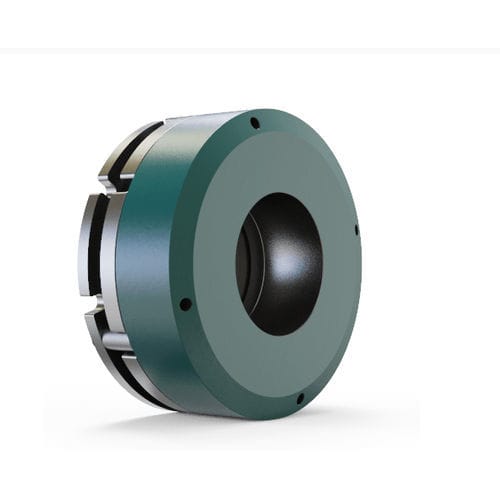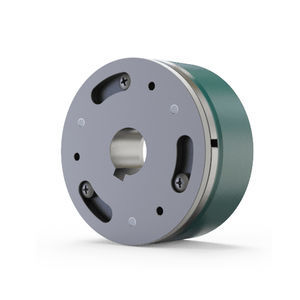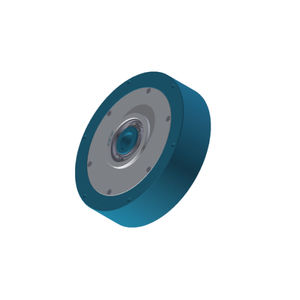
- Power Transmission - Mechanical components
- Mechanical Transmission
- Friction brake
- EMF ELEKTROMANYETIK FREN VE KAVRAMA SISTEMLERI LTD. STI.
Servo motor brake SMF frictionelectromagneticspring



Add to favorites
Compare this product
Characteristics
- Type
- friction
- Operation
- electromagnetic, spring
- Other characteristics
- high-torque, low-noise, for servo motors
- Torque
Min.: 0.4 Nm
(0.295 ft.lb)Max.: 140 Nm
(103.2587 ft.lb)
Description
SERVO MOTOR BRAKES
SMF series brakes are the same principle as Spring Applied Brakes (YBF Series). It provides the same precision operation in accordance with the high operating speeds and precision of servo motors. It has a compact structure that does not require brake adjustment. It is used to hold the servo motor shaft in the desired position for safe operation.
Product Features
Class H Coil Insulation (180 °C)
Long Life Asbestos-Free Lining
Special Coated Metal Parts
Quiet Operation Regime
Compact Structure Without Brake Adjustment Required
24 V DC Standard Operating Voltage
Optional Switch and Manual Release Rod Applications
Working Princible
The system, which is braked when there is no electrical energy, pulls the pressure flange to the body by defeating the pressure springs installed in the body with the magnetic field formed by the energy coming on the coil. The lining released by this gap (SHB) releases the spindle to which it is connected by a gear and key in the center. When it is desired to switch to the braking position, the effect of the magnetic field on the stator is removed by cutting the electricity. In this way, the installed springs move the pressure flange so that the lining is clamped between the mounting flange and the pressure flange and braking is performed.
Catalogs
SMF Series Catalogue
5 Pages
Other EMF ELEKTROMANYETIK FREN VE KAVRAMA SISTEMLERI LTD. STI. products
BRAKES
Related Searches
- Friction brake
- Spring brake
- Electromagnetic brake
- Friction clutch
- Electromagnetic clutch
- Clutch and brake
- Spring clutch
- Manual brake
- Toothed clutch
- Manual release brake
- Adjustable brake
- Combined clutch-brake unit
- Friction combined clutch-brake unit
- Electromagnetic clutch and brake
- High-torque brake
- Electromagnetic combined clutch-brake unit
- Servo motor brake
- Magnetic clutch
- Permanent magnet brake
- Low-noise brake
*Prices are pre-tax. They exclude delivery charges and customs duties and do not include additional charges for installation or activation options. Prices are indicative only and may vary by country, with changes to the cost of raw materials and exchange rates.







